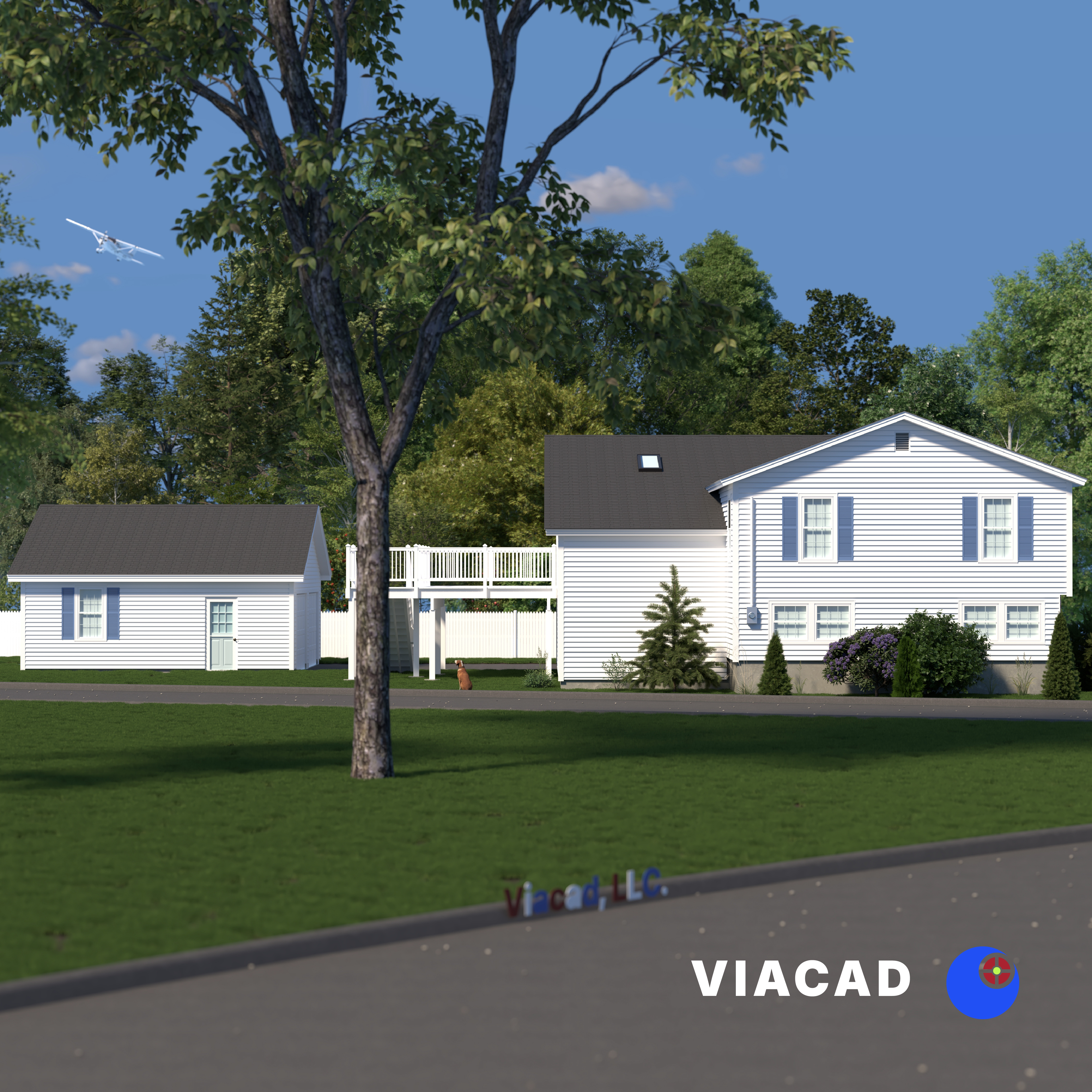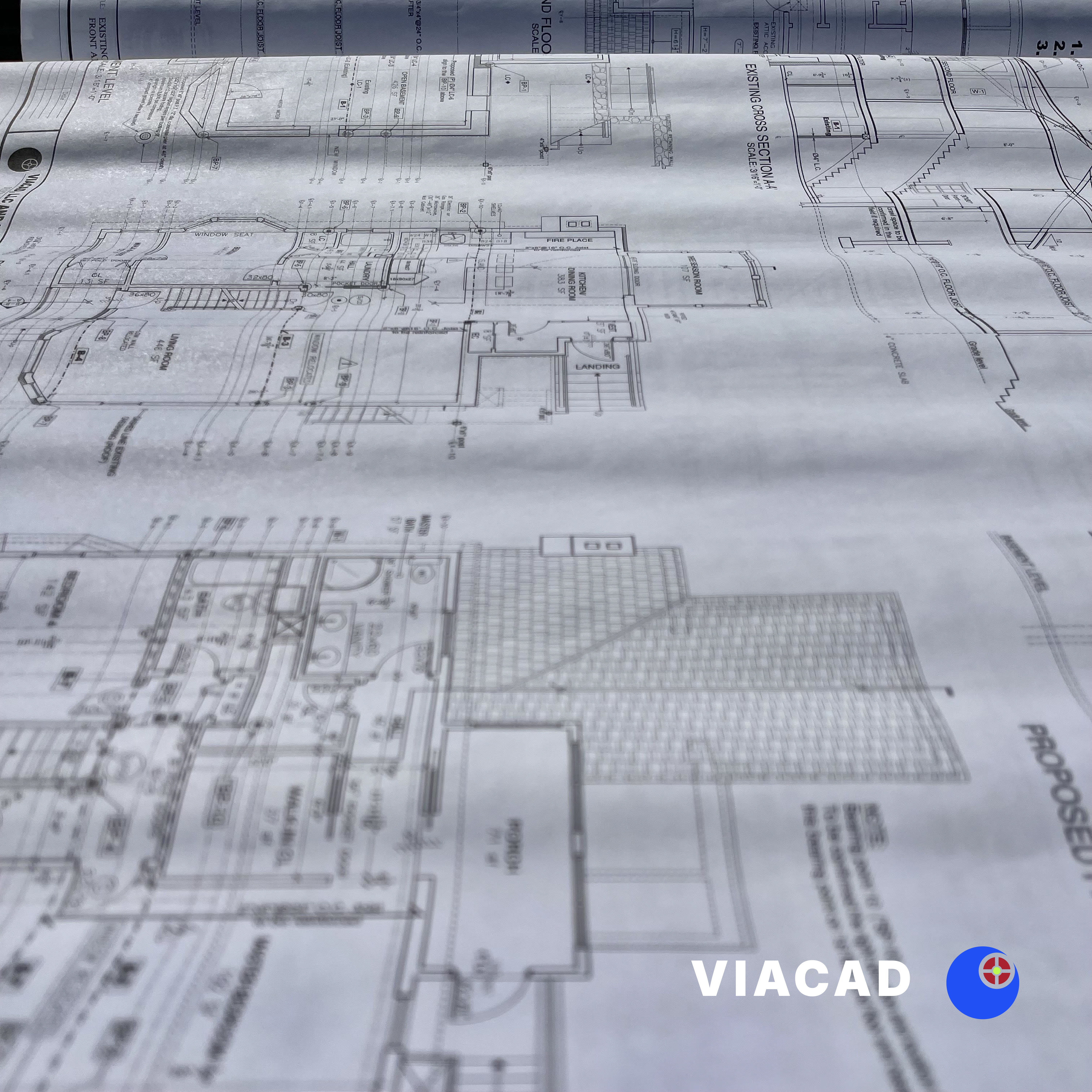
NOTE: VIACAD, LLC specializes in developing and producing detailed building plans (construction blueprints) for both residential and commercial projects across Massachusetts with more than 18 years of experience in design & construction producing professional permit-ready drawings for homeowners, builders, developers, and businesses.
Proper grading around a foundation is essential to protect your home from water damage and structural issues. In Massachusetts, where soil conditions and weather patterns can vary, understanding how to grade around a foundation correctly is crucial for maintaining the structural integrity of your property. This article will guide you through the process of grading around a foundation, highlighting best practices, necessary materials, and common pitfalls to avoid.
NOTE: Information provided here is for educational purposes only.
Proper grading around your house’s foundation is the first line of defense against surface water and moisture intrusion. When the ground slopes away from the foundation wall, it directs rainwater and runoff away from your home, preventing standing water and reducing the risk of flooding in basements or crawl spaces. Foundations play a crucial role in supporting the home and must be protected from excess moisture. Poor grading can lead to water pooling near the house foundation, which may cause cracks, erosion, and costly repairs. One of the most common grading mistakes is allowing the land to slope towards the foundation, which exacerbates water-related issues. The house's foundation requires effective water management to prevent infiltration and maintain its long-term protection. Preventing erosion is another key benefit of proper grading, as it helps preserve soil stability and landscape health. Preventing water damage is a primary goal of grading, ensuring the longevity of your property.
In Massachusetts, where heavy rains and seasonal changes are common, maintaining good drainage is critical. Without proper grading, water can seep into the soil around the foundation, weakening the concrete slab or foundation wall and potentially compromising the building’s structural integrity. Protecting the building's stability depends on effective grading and drainage solutions. Therefore, understanding how to grade around a foundation in Massachusetts is vital for homeowners and builders alike. The structure of the grading, including its slope and direction, is essential for safeguarding the overall structure of the home.
Before beginning any grading project, it is important to assess the soil conditions around your property. Massachusetts soils often have a high clay content, which affects water absorption and drainage. Clay-heavy soil tends to retain moisture, increasing the risk of water damage and erosion near the foundation.
Start by evaluating the existing ground slopes to determine the current drainage conditions and the direction of water flow. Look for signs of poor grading, such as standing water, erosion channels, or saturated soil near the foundation. Using proper equipment, such as a level or laser level, can help you measure the slope accurately and establish the desired slope for effective drainage.
Proper grading involves shaping the land to promote water runoff and protect your foundation. Site preparation may require you to remove soil that slopes toward the foundation or add soil to build up low areas and create the proper slope. The goal is to establish a consistent fall away from the foundation wall, typically a slope of at least 6 inches over the first 10 feet. A general rule is that for every 10 feet from the house foundation, there should be a drop of about 2 to 3 inches. This slope ensures that water is directed away from the house foundation, minimizing the risk of moisture-related problems.

Creating the proper slope around your home’s foundation involves several key steps. First, remove any debris, plants, or other materials that could interfere with grading. Next, use soil, sand, or gravel to build up the ground where needed, and add soil as necessary to achieve the proper grade so the ground is sloped away from the foundation. A shovel or wheelbarrow can be used to transport soil for grading projects, making the process more efficient and manageable.
When adding soil, it is important to use materials that promote good drainage and stability. A mixture of sand and gravel can improve water flow and prevent erosion, especially in areas with heavy clay content. Adding a gravel border around the foundation can further enhance drainage and help prevent soil erosion, providing an additional layer of protection for your home.
During the grading process, compact the soil gently to maintain stability without creating impermeable layers that trap water. Maintaining the proper angle and sloping of the terrain is essential to direct water away from the foundation effectively. Regular maintenance of the graded area, including regrading and adding soil as needed, will help preserve the sloped structure and prevent erosion over time.
Proper grading not only protects your foundation but also benefits the overall landscape by supporting healthy plant growth and preventing water damage. Effective grading helps maintain a healthy lawn by preventing standing water and erosion. The structure of the grading is crucial for long-term stability and effective water management.
While proper grading significantly reduces the risk of water damage, additional drainage solutions may be necessary to protect your foundation fully. French drains, sump pumps, and other water management systems can help manage excess water, especially in areas prone to heavy rains or poor soil drainage. Directing rainwater away from the foundation using proper yard grading and downspout extensions is essential to prevent water infiltration and structural issues.
French drains are perforated pipes installed underground that collect and redirect water away from the foundation. They work well in conjunction with grading by managing groundwater and surface water runoff. Sump pumps can be installed in basements or crawl spaces to remove water that accumulates despite grading efforts, providing an effective interior water removal system to protect the foundation from water infiltration and damage. Proper drainage is also crucial for different types of foundation slabs, especially slab-on-grade foundations, to prevent cracks and moisture intrusion that can compromise the integrity of these concrete slabs.
In Massachusetts, where seasonal snowmelt and heavy precipitation are common, combining grading with drainage systems ensures comprehensive protection against water damage and flooding. These drainage solutions are commonly used around houses to safeguard them from water accumulation and foundation issues.
Many homeowners consider DIY grading projects to save costs. While DIY grading is possible, it requires specialized tools, proper equipment, and knowledge of soil behavior and slope requirements. Incorrect grading can exacerbate water problems, leading to structural issues and costly repairs.
Hiring a professional firm with experience in Massachusetts foundation grading can provide peace of mind. Professionals assess soil conditions, design effective grading plans, and install drainage systems that comply with local regulations. Foundations are constructed using specific materials and methods, such as CMU blocks, fieldstone, or slab techniques, to ensure stability and longevity. They also ensure that reinforcing steel and concrete foundation walls are protected from moisture intrusion. Proper grading and drainage are essential not only for the foundation but also for safeguarding all structures on the property from water infiltration and related damage.
Maintaining proper grading around your foundation is an ongoing process. Regular inspections after heavy rains or seasonal changes can help identify erosion, soil displacement, or standing water issues early. Adding soil to maintain the desired slope and repairing any damaged landscaping or drainage materials keeps the grading effective.
Landscaping choices also impact grading and drainage. Avoid planting trees or shrubs too close to the foundation, as roots can disrupt soil stability. Using gravel or mulch in garden beds near the foundation can help prevent erosion and promote good drainage. Constructing a retaining wall may help manage water runoff from higher neighboring properties, ensuring that excess water does not flow toward your foundation. Proper grading also supports healthy gardens by improving drainage and soil conditions, which helps manage water runoff and supports soil nutrients. Additionally, water intrusion from poor grading can damage wood components near the foundation, leading to deterioration and potential mould growth, so maintaining correct grading is essential to protect your home's structure.
By committing to regular maintenance and monitoring, homeowners can extend the lifespan of their home’s foundation and prevent water damage.
Knowing how to grade around a foundation in Massachusetts is essential for protecting your property from water damage, erosion, and structural issues. Proper grading involves assessing soil conditions, creating a slope that directs water away from the foundation wall, and installing complementary drainage solutions like french drains or sump pumps. Whether you choose to undertake a DIY grading project or hire professionals, maintaining good drainage around your home's foundation safeguards your investment and ensures long-term stability.

Contact us if you'd like to commission or collaborate with VIACAD, LLC.
Currently accepting projects in Massachusetts.